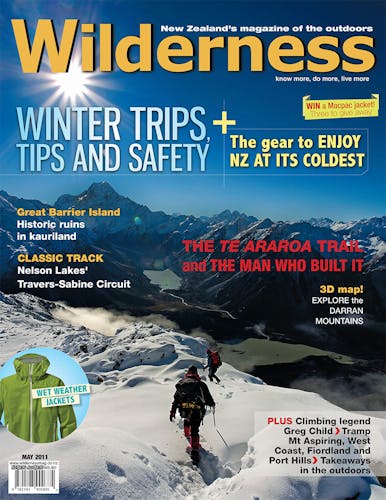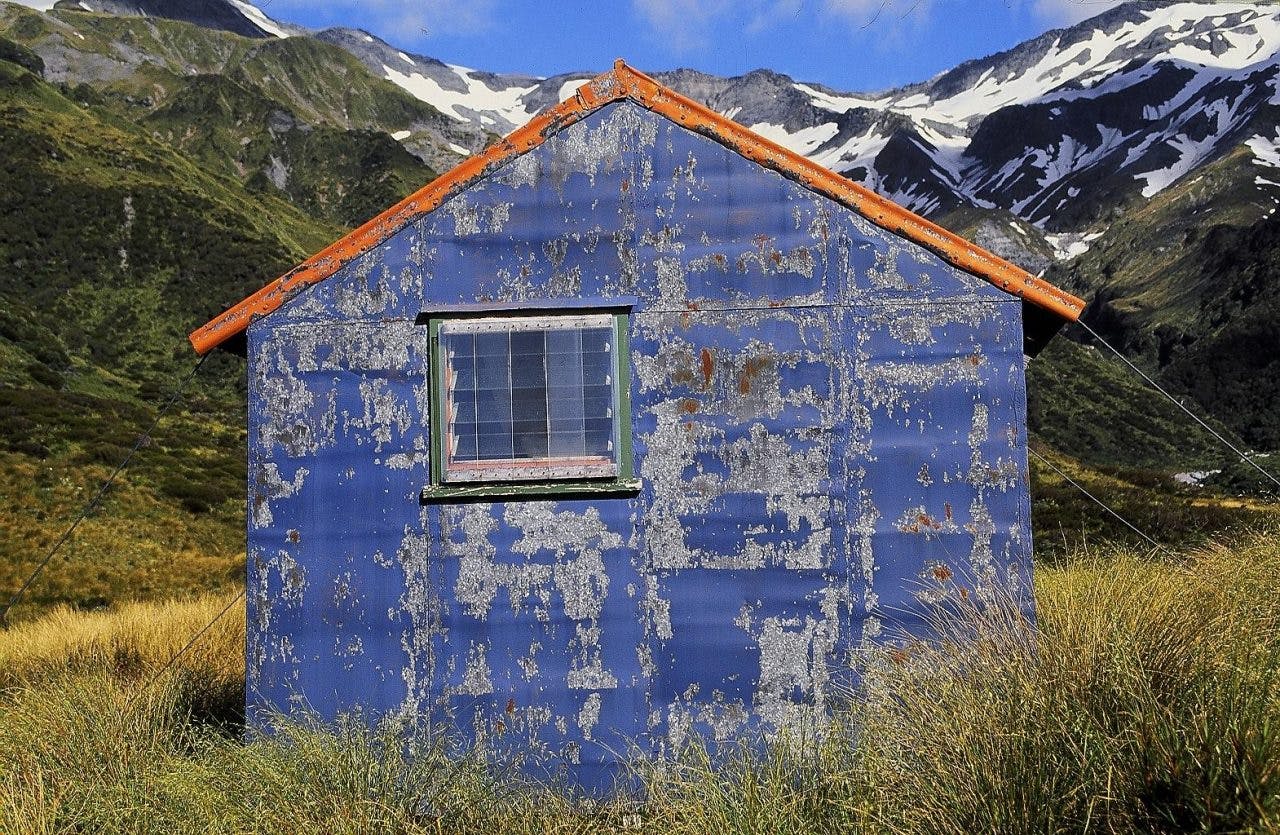A massive hut-building era started with a mission to control deer and ended with recreation use at the fore
From the 1930s Internal Affairs occasionally built huts for the Wild Animal Control division’s operations but it wasn’t until the 1940s that a plan for building permanent huts, rather than summer tent camps, was in place. In the winter off-season, cullers, whose skill with a hammer may have been negligible, built their own accommodation as well as tracks and bridges.
Various designs originated with a common theme, but little standardisation. In 1946, Internal Affairs successfully trialed airdropping materials for Anderson’s Memorial Hut in the Tararuas. The hut, named after a pilot who died in 1947 airdropping provisions in Fiordland, was built in four days for £250.
In 1956 the New Zealand Forest Service (NZFS), Noxious Animal Division took over operations and devised an increased building programme. Designs were regional because of the decentralised structure of the NZFS, but by 1957 a standardised four-bunk hut made of slotted steel framing covered in sheet metal, known as a Dexion hut, was designed. Several were commissioned in the Kawekas. Their construction was like the bolt-together Meccano toy building sets.
Standard timber-framed two, four and six-bunk huts were designed in 1958 and made in prefab form for parachute delivery. Various planes including the popular Cessna 180 where used, but it was the introduction of the helicopter that made a huge difference to hut building. Luna Hut in Nelson and Kakapo Hut in Buller were the first huts built using helicopter-delivered materials in 1958. The former was removed in 2004 but Kakapo still stands.
Post 1950s, larger capacity huts than required for cullers alone were built, reflecting the fact that the NZFS had an eye on their potential ongoing use. Hunters could take over and effect control of the wild animal populations once the paid cullers moved out but they also met the demands of trampers. Often built on established culler’s summer campsites, with sun, easy access to firewood and water, close to 1000 bright orange corrugated iron and sheet metal-covered huts sprung up across the country over four decades.
Some tramping clubs raised concerns that profusion and distribution of huts diminished the wilderness experience. They were optimally spaced at three or four hours distance for a fast moving culler. Over the decades, many have been demolished, removed, or disintegrated but hundreds of NZFS and a few Internal Affairs huts and bivouacs still survive, often with a multitude of modifications to their original structure – linings, additional windows, verandas, wood burners replacing open fireplaces and the orange paint replaced with muted tones. Now their scattering arguably gives users many options and much safety.
Disbandment of the NZFS in 1987 saw much of its responsibilities pass to the new Department of Conservation. From 1995, DOC asset reviews including the 2003 Review of High Country Facilities, resulted in mooting either minimal or non-maintenance and removal of under-used or dilapidated huts. A groundswell of objection to this saw tramping clubs, individuals and organisations such as the Westland Remote Huts online enthusiasts group Permolat take on informal and formal maintenance and preservation as well as lobbying and submitting on retention.
The network of classic huts that existed to serve cullers had narrowly focused architectural values, but the heritage values associated with them were high enough to tip the equation in favour of careful management of a unique asset that is unmatched in the world. DOC appears now to be stepping up its restoration and conservation commitments.
– Ross Millar







